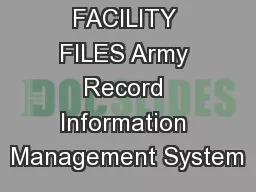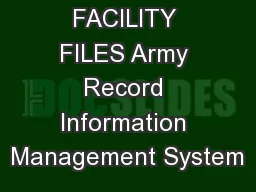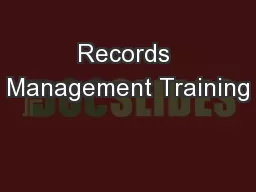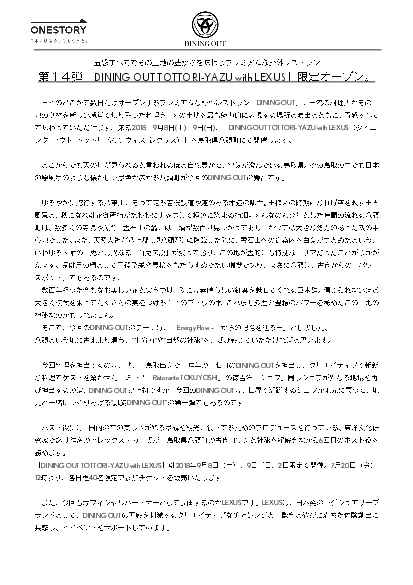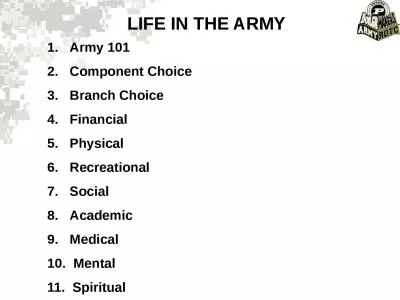PPT-DINING FACILITY FILES Army Record Information Management System
Author : olivia-moreira | Published Date : 2019-06-20
Army Record Information Management System ARIMS To assist you in understanding ARIMS we will discuss issues concerning the following areas AR 254002 ARIMS Areas
Presentation Embed Code
Download Presentation
Download Presentation The PPT/PDF document "DINING FACILITY FILES Army Record Inform..." is the property of its rightful owner. Permission is granted to download and print the materials on this website for personal, non-commercial use only, and to display it on your personal computer provided you do not modify the materials and that you retain all copyright notices contained in the materials. By downloading content from our website, you accept the terms of this agreement.
DINING FACILITY FILES Army Record Information Management System: Transcript
Download Rules Of Document
"DINING FACILITY FILES Army Record Information Management System"The content belongs to its owner. You may download and print it for personal use, without modification, and keep all copyright notices. By downloading, you agree to these terms.
Related Documents






